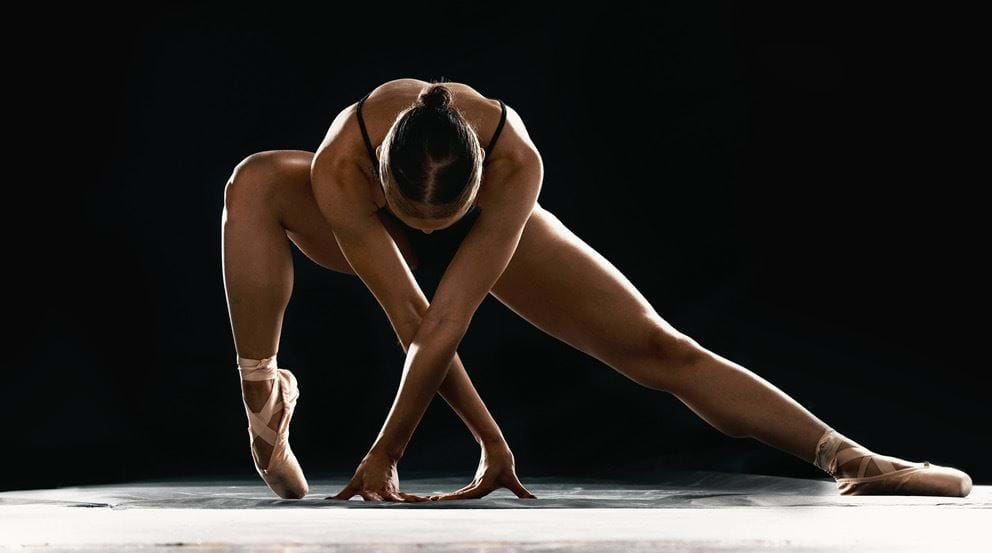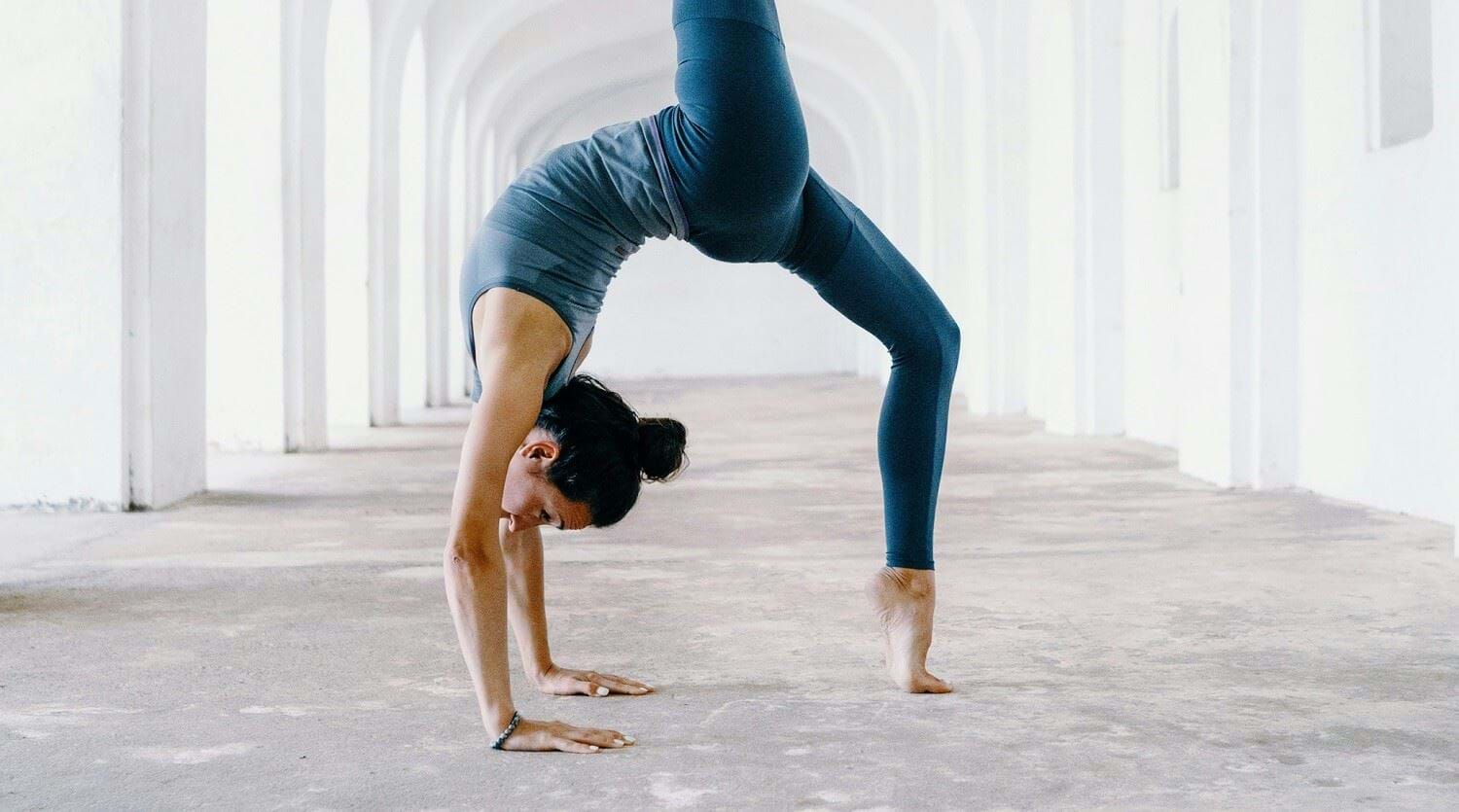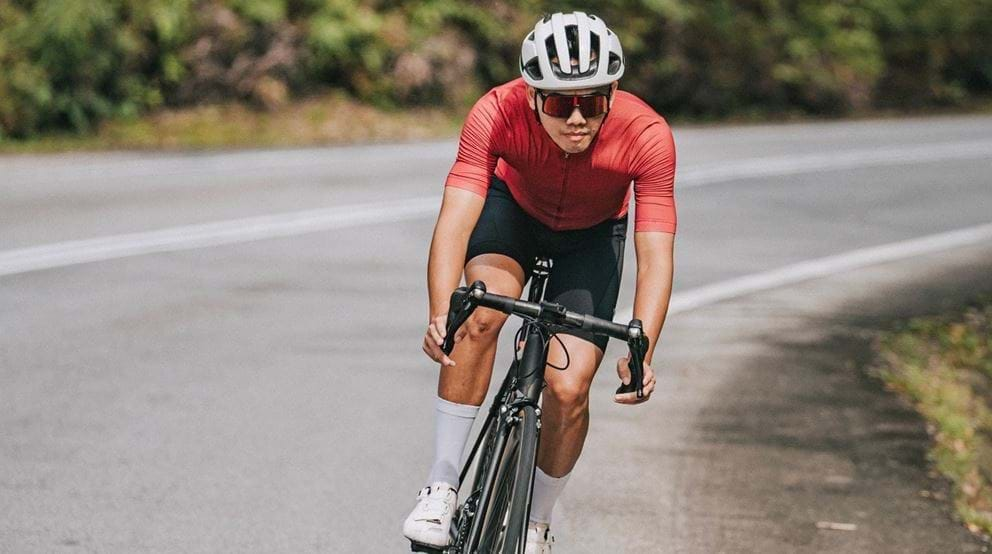The Difference Between Flexibility and Mobility
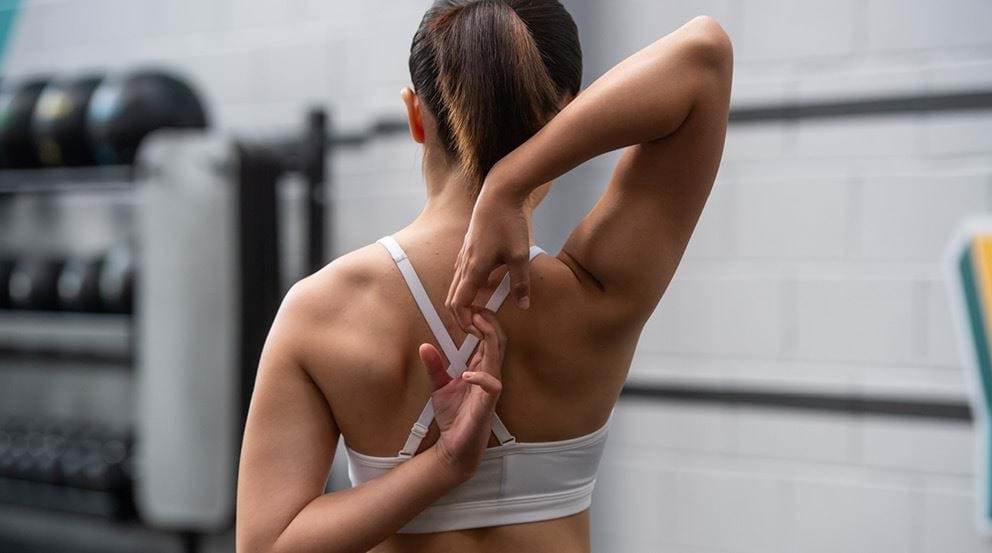
The Difference Between Flexibility and Mobility
Mobility Vs Flexibility | Flexibility & Performance | Mobility & Performance | Which To Do | Benefits | Mobility & Flexibility Tests | Mobility And Flexibility Exercises | Flexibility And Mobility Workout
Want to move better, feel more comfortable, reduce injury risk, and feel stronger? Training your flexibility and mobility can help you to achieve all of this and more.
We've asked PureGym Bramley PT and Contortionist, Jodie Leith, to explain the difference between mobility vs flexibility, what the benefits are, and how to improve both.
Are Flexibility And Mobility The Same Thing?
People often use the terms mobility and flexibility to mean the same thing, but there are differences between the two:
Flexibility refers to the ability of soft tissues (muscles and ligaments) to passively stretch. Flexibility is controlled by the central nervous system rather than the muscles.
Mobility refers to the joint's ability to actively move through a full range of motion, using your muscular strength.
Do you need both?
Ideally, yes. It is possible to have good flexibility but poor mobility, but having good flexibility and mobility means you can use your full range of motion comfortably, with lower risk of injury.
When you have good mobility, you have the strength to get into and support your body in your end ranges, rather than using gravity to get into positions.
Here are some examples to highlight the difference between flexibility and mobility:
Using your strength to achieve standing splits (mobility) vs using gravity to sink into floor splits (flexibility)
Sitting in a deep squat while holding something for support (flexibility) vs repetitions of weighted deep squats (mobility)
Using your arms to achieve a cobra backbend (flexibility) vs using your back muscles to pull into a cobra (mobility)
How Does Flexibility Impact Performance?
While mobility is important to reducing injury risks, having flexible muscles is key to unlocking your mobility in the first place.
When your muscles and soft tissues can stretch, your joints can move through their full range of motion. This can improve performance in two ways:
A bigger range of motion means more muscle fibres are recruited, which can contribute to greater overall strength gains and more end range strength and mobility.
Muscles which are more flexible have greater blood flow, so they have more energy and nutrients to perform their best.
Having flexible soft tissues also helps to reduce risk of injury, as you're less likely to accidentally push past your body's limits.
How Does Mobility Impact Performance?
Mobility has a similar impact to performance as flexibility - having good mobility means you can control your body in its end ranges, which can help you to achieve better depth and activate more muscles when exercising.
One benefit to movement that is unique to mobility is its impact on synovial fluid production. Synovial fluid is fluid that sits within the joint and acts as a lubricant between the two bones, allowing for smoother movement.
Moving your joints through their full range of motion stimulates synovial fluid production, reducing friction in the joint to enhance movement and reduce the risk of joint pain.
Should You Focus On Flexibility Or Mobility?
Most people will benefit from doing both a mobility and flexibility programme at the same time. This will allow you to achieve a greater range of motion while reducing the risk of injury.
There are some instances where prioritising one over the other can be more beneficial, however:
If you are hypermobile or already flexible:
If you have hypermobile joints or good passive flexibility already, you'll benefit more from training mobility and strength than passive flexibility, as being more mobile and stronger in your end range positions helps to improve stability and reduce injury. Learn more about safe strength training for hypermobility here.
If you are extremely stiff or have limited range of motion:
If you have very inflexible muscles, you might struggle to improve your mobility as you are unable to move your joints through much motion. Spending time to improve your flexibility will help to unlock a greater range, which you can build strength in.
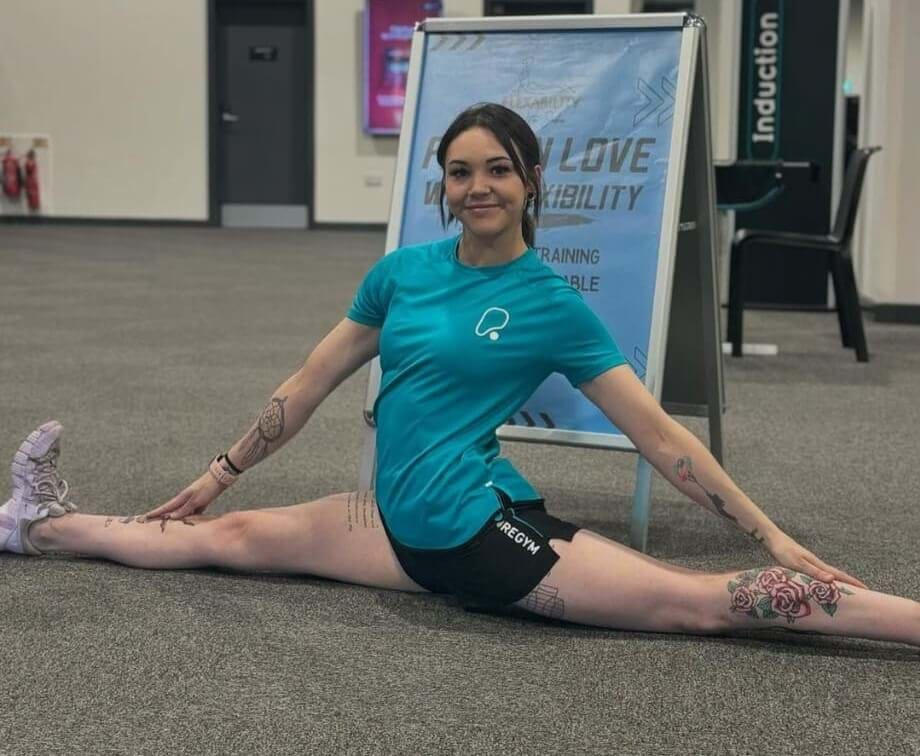
Benefits Of Training Flexibility And Mobility
Increased range of motion: Mobility and flexibility can increase ROM in the gym and daily life, from deeper squats to being able to touch your toes.
Reduced risk of injury: Being more flexible means your muscles and joints can tolerate more movement, so you're less likely to get injured when moving around and even sleeping in a funny position.
Stronger muscles: There is a misconception that you can't be strong and flexible, but working on your mobility means you are strong even when your muscles are lengthened.
Improved balance and coordination: Improving your mobility can help with balance and stability, core strength, and coordination.
More confidence: Improved mobility comes with greater control of your body which can help with confidence and mindset.
How To Test Your Mobility And Flexibility
There are multiple ways to test your flexibility and mobility, and we've listed some below. You can use these as a baseline to measure your flexibility and mobility progress.
It's important to remember that different people will require different levels of flexibility and mobility - you should aim to be flexible enough to do daily activities and sports without pain.
Sit and reach test: Sit on the floor with legs extended and reach as far forward as possible. This tests your hamstring and lower back flexibility. A good goal for this is to be able to reach your toes.
Active leg raise: Lie down on your back with legs extended. Keeping both legs straight, lift one leg as far towards your torso as possible while keeping the other on the floor. This tests your hamstring flexibility and hip flexor strength. A good goal is to get your leg at a 90 degree angle from the floor.
Shoulder rotation wall test: Stand with your back to a wall with your head, upper back, glutes, and heels pressed against the wall. Place your arms out to the side so the upper arms touch the wall, elbows in line with your shoulders and bent so your hands are facing out in front. Rotate your shoulders to bring the back of your hands up and towards the wall, then rotate all the way down to bring your palms towards the wall. This exercise measures external and internal shoulder rotation. A good goal is to get the hands within three inches of the wall both ways.
Standing shoulder flexion test: Stand with your back against the wall and pelvis tucked, feet slightly out in front. Raise your arms overhead and as far back as you can without arching the spine and losing contact with the wall. A good goal is to get both hands to the wall.
Mobility And Flexibility Exercises
To increase your mobility and flexibility, you should look to add the following types of exercises into your training:
Static stretching
Static stretching involves using an external force (e.g. the wall, a band, or your arm) to create a passive stretch which is then held for at least 20 seconds and can help to improve flexibility. The key to static stretching is to allow the muscles to relax to deepen the stretch, and to perform when the muscles are already warm.
Examples of static stretching:
Standing hamstring stretch
Wall calf stretch
Puppy pose
Pigeon pose
Low lunge
Dynamic stretching
Dynamic stretching involves moving in and out of a stretch to move the muscles and joints through a full range of movement, rather than holding the stretch for a period of time. Dynamic stretches are great to do before a workout or before static stretching as they help to warm up the muscles while improving mobility.
Examples of dynamic stretching:
Cossack squats
Deep squats
Leg swings
Shoulder dislocates
Active stretching
Active stretching is where you use your muscles to create the stretch, which is then held for 10-20 seconds. For example, using your quad and hip flexor muscles to pull your hamstrings into a stretch.
Another form of active stretching is where you engage the muscle being stretched to resist the stretch. For example, engaging the hamstring to press against resistance in a hamstring stretch.
Any static stretch can be turned into an active stretch. A good approach is to do 10-20 seconds active stretch followed by 20-40 seconds static stretch.
Strength training
Strength training is a great way to build mobility and flexibility. Weights can help to increase your depth while building strength at end range. Rather than opt for your heaviest weights, use lighter weights that allow you to move through your full range of motion to help build strength through your full range.
Examples of strength training for flexibility:
Deep squats with weights
Stiff leg deadlifts
Bulgarian split squats
Chest flyes
Dumbbell pullovers
Joint circles
Joint circles involve moving your joints through their full range of motion, for example neck circles, ankle circles, hip circles. They can be used to lubricate the joints before a workout or throughout the day.
Daily Mobility And Flexibility Routine
Ready to get flexible? Try doing this 10 min full body stretch for flexibility and mobility each day, in the morning or before your workouts.
- Joint circles - 20 seconds per joint, 10 seconds each direction
Neck: gently rotate the head in a circular motion as far as possible in one direction, then switch direction
Shoulders: shrug the shoulders up and circle forward for 10 seconds, then reverse direction
Hips: standing on one leg, bend the other knee and bring it forward and up. Move the knee out to the side as far back as you can go, then down to the floor, circling around the hip joint. Repeat for 10 seconds then reverse direction.
Ankles: rotate the feet in one direction before reversing.
- Cobra raises - 30 seconds
Lie on your stomach with legs extending out and hands placed underneath your shoulders. Keeping your hips pressed to the floor, use your back muscles to lift your shoulders and chest off the floor as high as you can go without using your hands. Lower down to the floor and repeat for 30 seconds.
- Cobra hold - 30 seconds
Lie on your stomach with hands under your shoulders. Push up through the hands to raise your torso off the floor and lengthen through the spine by pushing your chest towards the ceiling. Gently drop your neck back and hold for 30 seconds.
- Shoulder dislocates - 30 seconds
Hold a resistance band or light bar with an overhand grip, hands wider than shoulder width apart. Keeping your spine neutral and arms straight, raise the bar or band overhead and back behind your body. Pause then return the bar back to the front and repeat. You can adjust your hand width if this is too challenging or easy.
- Deep squat to forward fold - 30 seconds
Start by squatting down as far as you are able to while keeping your feet flat on the floor and place your hands in front of your feet. Push through your heels to straighten your legs while keeping your hands on the floor. Once your legs are as straight as you are able to, push through your hands to bring your chest closer to your thighs before bending the knees back into a deep squat. Repeat for 30 seconds.
- Cossack squats - 30 seconds
Stand with your feet shoulder width apart and take a large step out to the side, then slightly turn both toes out. Place all your weight into the right foot and bend the right knee to lower down while keeping the left leg straight. As you lower down, turn your left toes towards the sky. Push back up to standing and repeat on the other side.
- Low lunge knee taps - 30 seconds each side
From kneeling, step your right foot towards into a long lunge and tuck your left toes under. Keeping your pelvis tucked and torso upright, shift forward to deepen the lunge as far as you can go. Press through both feet and lift the left knee off the ground while keeping your hips low. Gently place the knee down and repeat.
- Kneeling lunge to half split - 30 seconds each side
From kneeling, step your right foot forward into a kneeling lunge and place your hands on either side of your feet. Lift your chest up high and push with your glutes to feel a stretch in your right hip flexor. Pause for a breath then shift your hips back and straighten the right leg while keeping your hands on the floor, and fold over your front leg for a breath. Continue to alternate.
- Pigeon pose - 20 seconds each side
From a table top position, bring your right knee to your right wrist and swing your foot out so your shin is facing forward. Extend your left leg out behind you as you lower your hips to the floor. Fold over your front leg, aiming to keep the hips square.
- Standing forward fold - 10 seconds active, 20 seconds static
Stand with your feet hip width apart. Keeping the chest up and back flat, hinge forward at the hips as far as you can. For the active part of this stretch, maintain a flat back and use your hip flexors to bring your stomach closer to your thighs. After ten seconds, allow the back to round and release the head so that your upper body hands heavy. Hold for 20 seconds.
- Puppy pose - 10 seconds active, 20 seconds static
Start in table top position and walk your hands forward in front of you as far as you can while keeping your hips over your knees, then sink your chest towards the floor. For the active part of this stretch, think about pushing your armpits and chest towards the floor to deepen the stretch. After 10 seconds, relax into the stretch and let gravity to the work.
- Butterfly pose - 10 seconds active, 20 seconds static
Sit on the floor and place the soles of your feet together in front of your pelvis, with knees out to the side. For the active part of this stretch, place your hands on your knees and lightly push down while resisting the force by pushing up through your knees. After 10 seconds, place your hands on the floor and fold forwards.
- Seated twist - 30 seconds each side
Sit cross legged and place your right palm to the outside of your left knee, and left palm on the floor behind you. Gently rotate your chest to the left and turn your gaze over your shoulder. Focus on lengthening through the spine and rotating from the ribs. Repeat on the other side.
As your flexibility and mobility increases, you can make your routine longer or more intense to continue to improve your range of motion. You can get more flexibility and mobility advice and exercises here.
Want to get seriously flexible? Why not work with a personal trainer who specialises in flexibility and contortion like Jodie who can help you to improve your flexibility safely.
